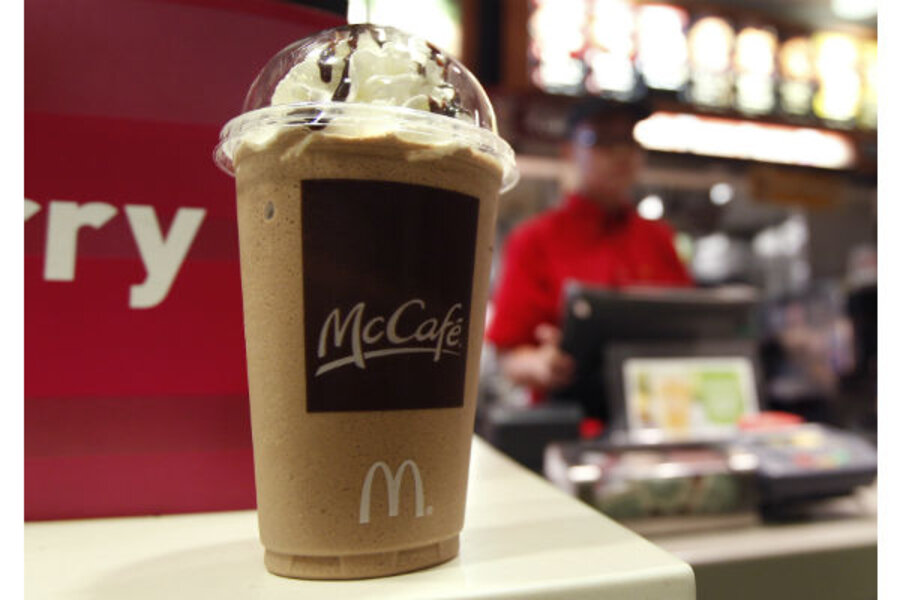Kids drop soda for coffee?
Loading...
Caffeine consumption in kids is shifting: What once may have consisted of a can of soda at a birthday party now includes sucking frosty coffee beverages from a straw. And while energy drinks are relatively new on the caffeinated scene, they have already earned favor in the eyes of college kids.
A new study published Monday in the journal Pediatrics delivered the latest research numbers on caffeine intake for US kids. While the consumption of caffeine hasn't necessarily increased in recent years, the sources have shifted – from mostly soda to also including coffee and energy drinks.
The study, tracking research from 2000 to 2010, reports that 73 percent of young adults consume caffeine every day. Even in pre-school age children, caffeine consumption is equal to roughly 10 milligrams (half a can of soda per day) due to drinking soda, tea, or chocolate-flavored milk. This amount is slightly less than a decade ago.
The increased sources for kid caffeine consumption, including the milk-shake tastiness of frozen coffee drinks, should encourage parents to consider their own drink choices as they aim to help their kids set healthy habits.
According to an Associated Press report, Stephen Daniels, chairman of the American Academy of Pediatrics nutrition committee, says that caffeine has no nutritional value and that there is no good data on what amount, if any, is safe for kids.
While parents often monitor the beverage choices for young kids, most teens are attracted more and more to flavorful coffee drinks - like the Starbucks Frappuccino, McDonald's Frappe, or the Dunkin' Donuts Coolatta.
Mark Pendergrast, author of “Uncommon Grounds,” a book about the shift in coffee perceptions through the years, told The Wall Street Journal's Market Watch blog, "Teenagers, who may not have acquired a taste for a straight black cup of joe, can instead get a fix by stopping by Dunkin’ Donuts to get a frozen Coolatta or passing by Starbucks to pick up a Frappuccino."
For college-age young adults, the attraction to energy drinks accounts for roughly 10 percent of their caffeine consumption. According to the study results, energy drinks did not exist in the data from 1999-2000, but increased to nearly 6 percent of caffeine intake in 2009-2010.
While the overall numbers for caffeine consumption have remained relatively stable over the last decade, the prices for caffeinated beverages have not. A can of soda will set you back roughly one dollar at a convenience story, while a Frappuccino will cost upward of four to five dollars, depending on where you live.








